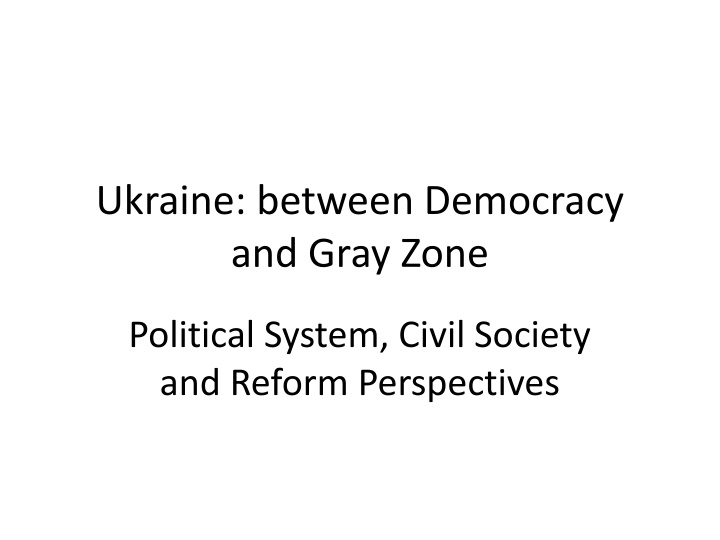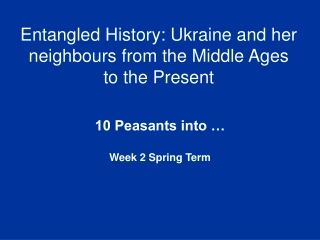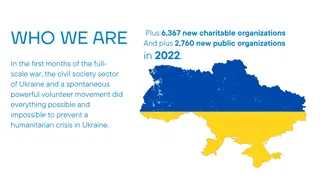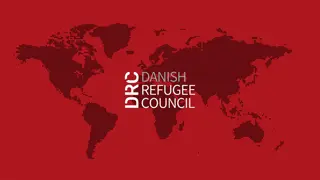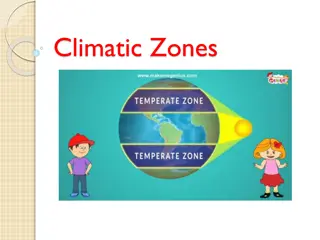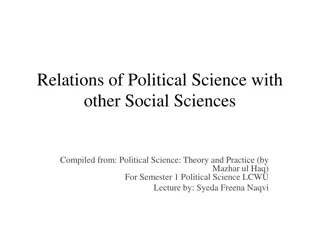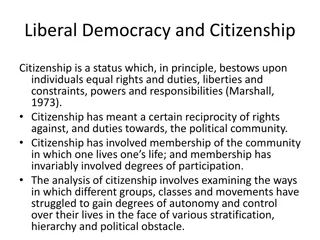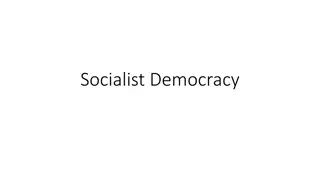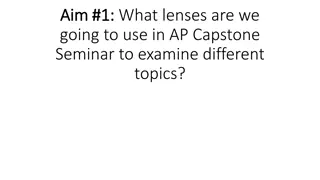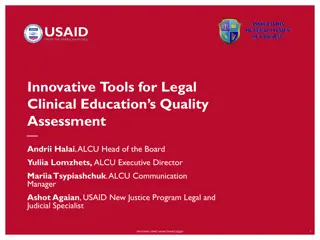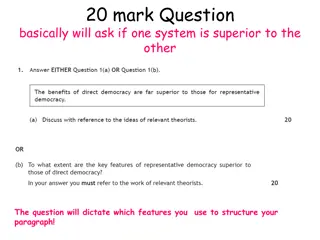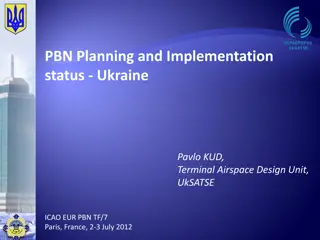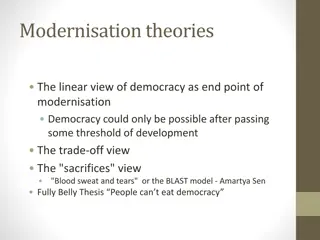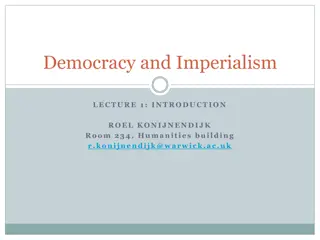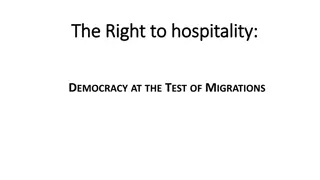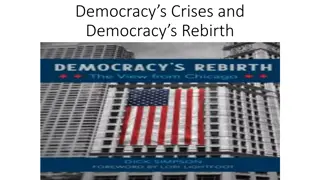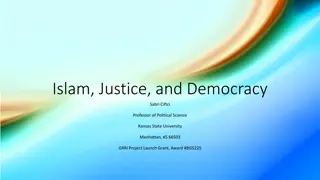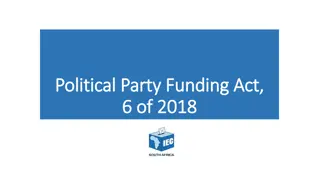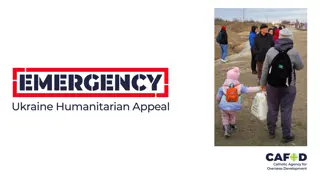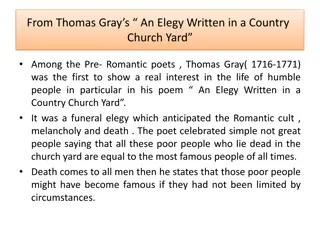Ukraine: Democracy and Gray Zone Political System
Ukraine's political landscape is marked by a blend of democracy and a gray zone system. The country operates as a Parliamentary-Presidential Republic with a high reliance on elections for change. However, there are challenges such as corruption, political instability, and influence from oligarchs. Despite reforms and the presence of numerous political parties, Ukraine faces complexities in governance and societal reforms.
Download Presentation

Please find below an Image/Link to download the presentation.
The content on the website is provided AS IS for your information and personal use only. It may not be sold, licensed, or shared on other websites without obtaining consent from the author.If you encounter any issues during the download, it is possible that the publisher has removed the file from their server.
You are allowed to download the files provided on this website for personal or commercial use, subject to the condition that they are used lawfully. All files are the property of their respective owners.
The content on the website is provided AS IS for your information and personal use only. It may not be sold, licensed, or shared on other websites without obtaining consent from the author.
E N D
Presentation Transcript
Ukraine: between Democracy and Gray Zone Political System, Civil Society and Reform Perspectives
Political System Parliamentary-Presidential Republic (changed in 2004, in 2010, 2014) High role of Elections as a way to change authorities (unlike other Post-Soviet states) Political Pluralism Participation in International Organizations (UNO, Council of Europe, WTO, OESC), high orientation on external support
4 Ukrainian Presidents (alive) in December 2013
Political Parties 316 Parties registered (79 registered in 2015, 38 in 2014) But only about 30-40 of them running elections Most popular ones traditionally associated with oligarchs or local chiefs: - Petro Poroshenko Bloc ( Solidarnost + Udar Vitaliy Klitchko) - Fatherland Batkivshina (Yuliya Timoshenko) - Radical Party of Oleh Lyashko (sponsored by Serhiy Liovochkin) - Oppositional Bloc (sponsored by Rinat Akhmetov) - Ukrop, Vidroghennya, Samopomich (sponsored by Igor Kolomoiskiy)
Political Parties From 2016 provided state s financial support and strict accountability for political parties, which gained more 2% of voters on a last elections New Legislation on Local Elections eliminated single- district candidates for cities and regional councils, established two-round elections for large cities mayors, which increase influence of political parties, but made them even more populistic New parties like Democratic Alliance, Syla Lyudey (People s Power) increase their presence in councils, using co-funding and horizontal connections
Political System: Gray Zone features Corruption (Rank 130/168 states ) Instability of political system (conflicts in Parliament, on local level, rapid changes of parties electoral support, new border-lines in electoral landscape) Oligarchs still impact politics sponsoring political parties and owning Media Dependent and ineffective Courts Rigid and corrupted middle-level bureaucracy
Roots of Separatism Soviet Legacy (industrial, social and lingual) Privatization on 1992-1996 created regional industrial and political clans, corny-economy and Rule BY Law in spite Rule OF Law During 2002-2012 Parties used regional diversities, speculated on lingual, historical and geopolitical issues Myth Donbass feeding all Ukraine , fear to loose political control and influence, budget subsidies after Yanucovich ousted Russian Media propaganda, training of leaders, creation NGO Poverty, distrust in Ukrainian state authorities (motto pensions and salaries as in Russia )
Russian Project Novorossia failed, but undeclared war still going What they wanted What they get
Conflict afterwards Crimea Peninsula occupied, part of Donetsk and Luhansk oblast uncontrolled About 8 000 of died and wounded during 2014- 2015 (UN statistics) 1 014 500 of IDPs (mostly placed in Eastern Ukraine) Challenges for social policy (IDPs, Anti Terroristic Operation veterans, replaced institutions etc) Unmarked and unsecure state borders
Gray Zone Risks Frozen Conflict, weak State s sovereignty Militarization of society, uncontrolled and unknown number of guns Poorest state in Europe (GDP 3082 $ per Capita), economical crisis and shadowed economy Risk of new street protests, pro-Russian revenge and even Russian invasion
Ukrainian Rights: marginals or a real power?
Ukrainian Rights Extraordinary Parliamentary Elections 2014 results - Right Sector 1,8 % of voters support; - Dmytro Yarosh 0,7 % on Presidental Elections - Svoboda 4,7 % in 2014 vs 10 % in 2012, - Oleh Tyagnybok 1.16 % on Presidental Elections - Andriy Biletskyu (Azov) won single-member district as independent candidate in Kyiv in 2014
Ukrainian Rights: perspectives Public attention to ATO and risk of real war with Russia decreased, caused by economy issues, normalization of conflict situation Discreditation of heroes and volunteering battalions in some Media, prosecution and trials for corruption, embezzlement of public funds and state supplies Support of European course by majority of population, fears of Third Maidan Internal ideological migration from radical ethnic nationalism to more centrist or traditional values (family, patriotism, decommunization) to get more voters support ( Right Sector , Biletskiy)
Civil Society: Third Sector More than 80 000 NGO registered Active volunteers movement (especially in Kharkiv and Dniepropetrovsk, where in 2014-2015 they assumed the functions of state bodies, helping IDPs and Army) Unconventional acts ( garbage lustration , vandalism toward communistic memorials) coexisting with wide educational, charities, conflict prevention initiatives, human rights movements, civil diplomacy etc. Analytical and Experts Platforms (RPR, CVU, Opora) engaged in policy-making, monitoring and advocacy
Civil Society: Media Media-holdings concerned to oligarchs, but due to competition between them could give comparatively objective view Poroshenko owns his own television network, Fifth Channel, and has rebuffed press freedom groups calls for him to sell it. Among other key media owners are Dmytro Firtash (Inter), Ihor Kolomoysky (1+1), Rinat Akhmetov ( Ukraine - TV), and Viktor Pinchuk (Novy Kanal, STB, ICTV).
Civil Society: Media + 2 points in Freedom House ranking during 2015 and 8 % of people trust Fight again Russian propaganda, banned 14 Russian channels, barred Russian journalist to enter the country Ministry of Information established: fears of censorship Slow process of setting up Public media, especially in regions
Public Opinion Diverse due to region especially towards NATO, historical memory, decommunization and conflict Common all over Ukraine in distrust on state authorities, political parties and leaders New lines of cleavages (Maidan/ Antimaidan, proUkrainian/ proRussians, for deccomunization) inside Southern and Eastern regions
Public Opinion At the end of 2015 a total of 60% of the population feel that the events in Ukraine are unfolding in the wrong direction The main signal that the country has started to go in the right direction for the majority of the population would be putting an end to the war, establishing peace in the Donbas (73%), overall growth of the Ukrainian economy (56%), the overall growth in the standards of living i.e. pensions, wages and stipends (52%), criminal liability of corrupt officials (50%) rise an industry and the creation of new jobs(37%).
Trust / distrust in Ukrainian society Leaders of Public Trust Volunteers 68 % Church 62 % NGOs 46 % Ukrainian Media 47 % Armed Forces of Ukraine 44 % Volonteering Batallions 42% Distrust Leaders President 62 % Government 74 % Political Parties 87 % Verkhovna Rada - 78 % General Prosecutor s Office 79 % Courts 80 % Russian Media 84 %
Public Opinion (Foreign Policy) In December 2015 a total of 57% of the people chose orientation towards accession to the EU, while only 13% were in favor of the Customs Union (Russia, Belarus, Khazakhstan) 43 % feels that the best variant to guarantee the security of Ukraine would be joining NATO 29% of the people support the neutral status of Ukraine, while support of a military union with Russia fell to a record low 5%
EU vs Custom Union: regional perspective Western region is fully oriented towards the EU (85% vs 2%). Central region: 63% EU versus 6% CU, Southern regions: 27% EU versus 20% CU, in the East of Ukraine these vectors are almost equal (29% and 30%) In Donbas 24% for EU membership and 33% for the Customs Union. However, in the Southern, Eastern and Donbas regions a significant part of the population is undecided as to their orientation (53%, 41% and 43%, respectively) Number of proponents of NATO in Eastern Ukraine increased from 20% to 39%, while those in favor of a neutral status fell from 43% to 29%.
Public Opinion (Reforms) In December 2014 a total of 43% of the population was ready to put up certain material hardships for the sake of reforms in December 2015 the number of people ready to tolerate material problems for the sake of the success of reforms fell to 33%, 8% of which responded however long it will take, while 25% responded not more than a year. 59% said they will not tolerate it, 20% of which do not believe in the success of reforms
Reforms Agenda for Ukraine Declared and ongoing Decentralization (local government reform) Reforms for fair Justice Deregulation for business Transparency and efficiency of state/ local authorities, E-Government Humanitarian bloc (education, health care)
Cosmetic effects or first steps for real system changes? New Police (Front Office ) Contract army (but still more than 400 Generals) National Anticorruption Committee New Law on Higher Education (University Autonomy, Rector elections, more close to Bologna Process) New Legislation on Public Service, Political Parties, Local Elections
Conclusions The window of opportunity for reforms closing fast Perspectives of reconciliation and peace building on Donbas unclear even for elites Weak and ineffective state authorities vs strong civil society, which (optimistically) could influence and control changes External pressure and support is highly important for reforms
Usefull Links Authorities: www.rada.gov.ua, www.kmu.gov.ua, www.president.gov.ua Reforms Monitor and initiatives http://carnegieendowment.org/specialprojects/U kraine/, http://rpr.org.ua/en/, Civil society, Media: www.stopfake.org/en, http://medialaw.org.ua/en, http://sprotyv.info/en, http://www.khpg.org/en/, http://www.irf.ua/, www.dif.org.ua Elections: www.cvk.gov.ua, https://www.oporaua.org/en/, www.cvu.org.ua
